How Biba’s make-up and cosmetics line started a beauty revolution
Ahead of a new Biba retrospective opening at London’s Fashion & Textile Museum, Hannah Tindle speaks to Barbara Hulanicki about its pioneering make-up and cosmetics line

Biba’s make-up and cosmetics line, launched in 1970, was pioneering in every sense of the word. Alongside the likes of Mary Quant, another iconoclastic fashion label emblematic of the late 1960s and early 1970s subculture, it revolutionised how make-up was designed, marketed, and worn, speaking to a new generation pushing against mainstream conventions.
And, it’s hard to imagine that the beauty industry, which is now estimated to be worth $599.33 billion as of 2024, would look anything like it does today, without the risk-taking of Biba founder, Barbara Hulanicki.
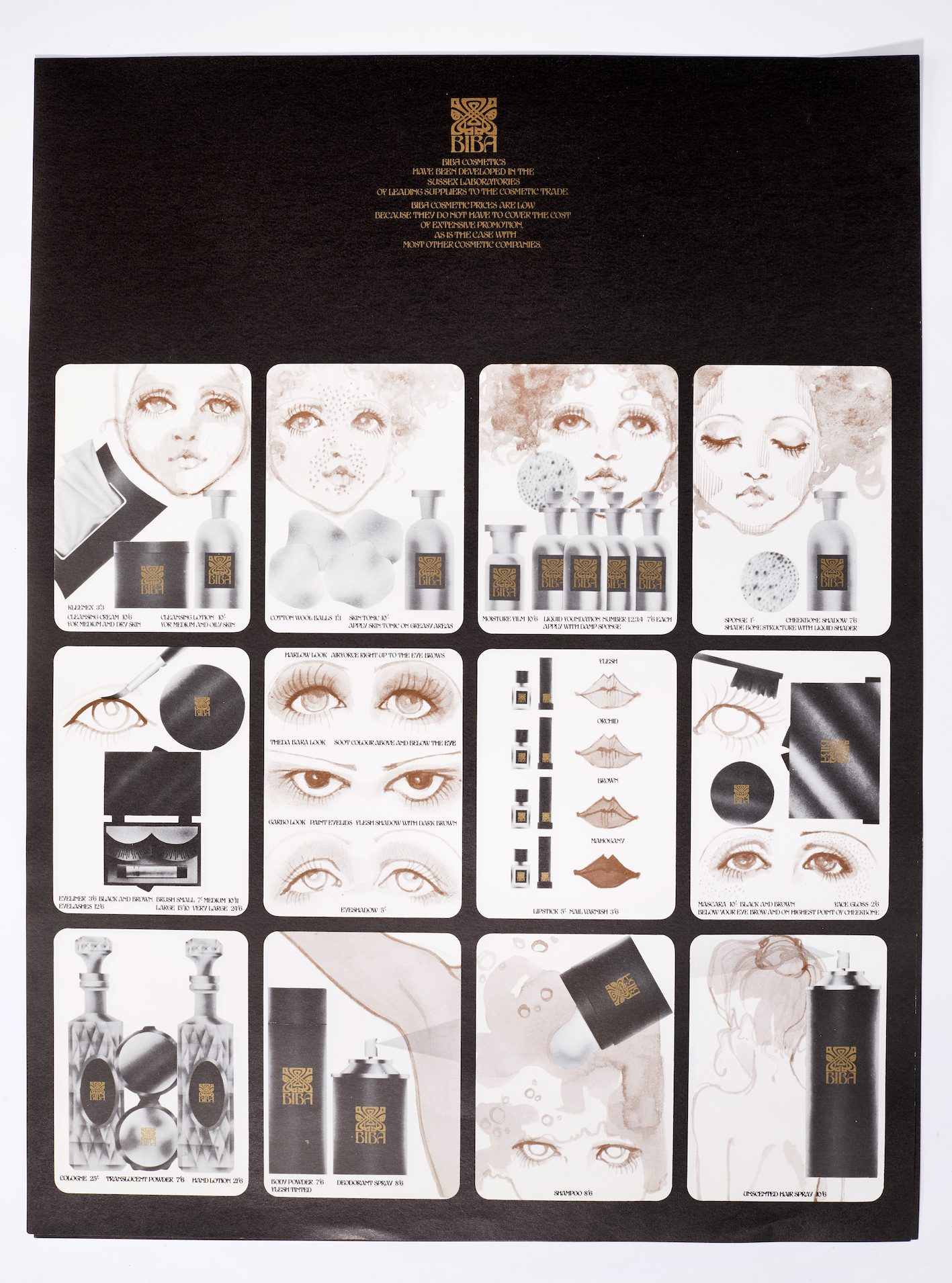
Illustrations of Biba make-up and cosmetics
Biba’s make-up and cosmetics sparked a beauty revolution
‘At the time, there was nothing like it,’ says Hulanicki, who was born in Warsaw, the daughter of a Polish diplomat. She is now 87 and living in Miami, Florida. After moving to Brighton in 1948, and gaining a degree in illustration from Brighton College of Art, Hulanicki went on to work freelance upon graduating. After meeting her late husband, advertising executive Stephen Fitz-Simon, the pair founded Biba in 1963, as a small mail-order fashion store.
‘By the time we had opened our biggest store on Kensington Church Street, we had the counters for our perfumes and things. And Fitz [the nickname of her late husband] said to me: “Well, where are the cosmetics?” So we did some research and found this big factory in East Grinstead, just outside of London, that made all the products for Revlon. And we went to see what we could do with them. On our first meeting, we faced this huge table with about 20 businessmen sitting around it. And I thought: “fucking hell!”’
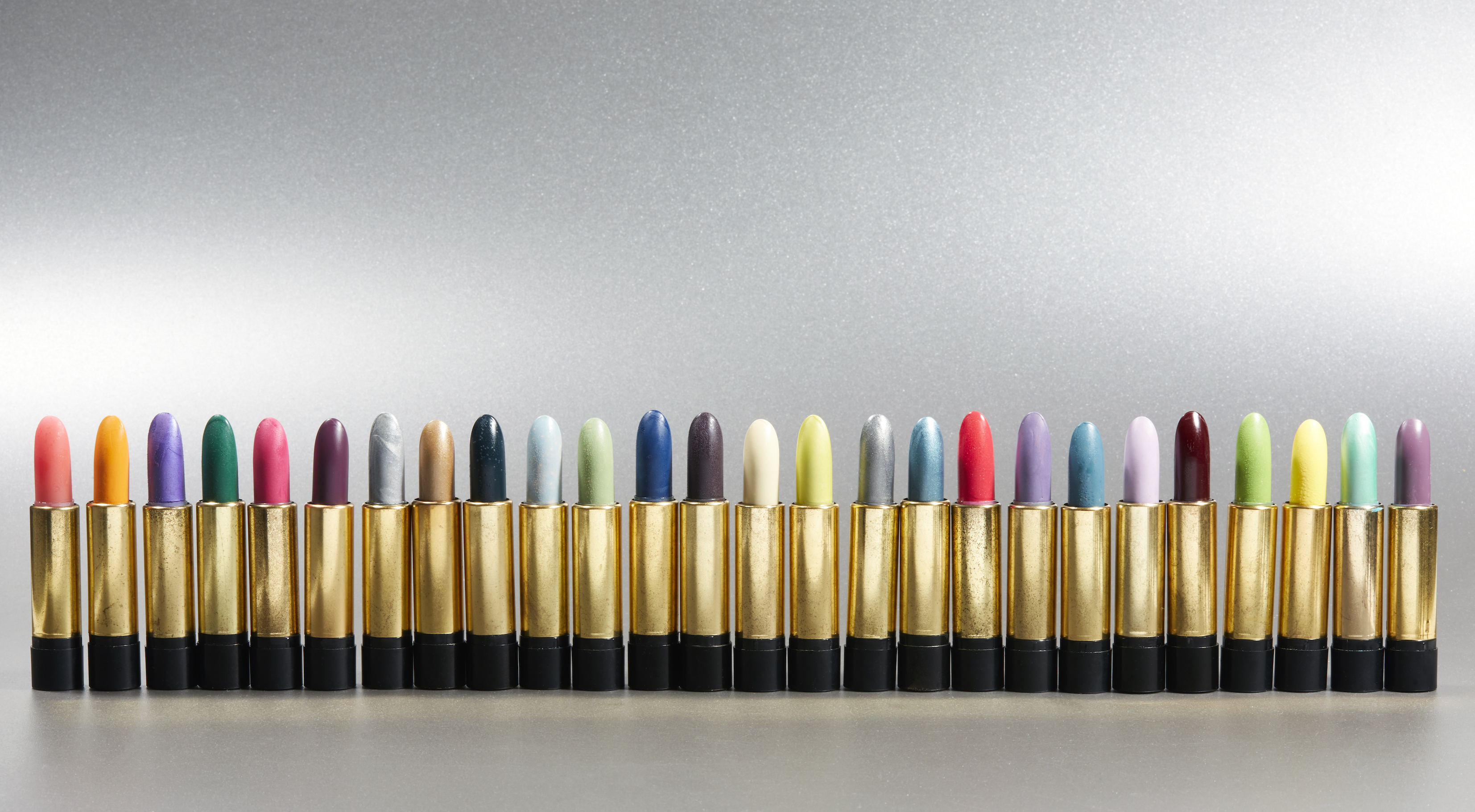
Biba lipsticks came in a rainbow spectrum of shades, which had never been seen before
Hulanicki understood right away that said businessmen weren’t going to buy into her unconventional vision, as her then-assistant Delisia Price (who ended up heading up the make-up line before make-up artist and hairdresser Regis Huet) remembers. ‘Barbara had amazing ideas about cosmetics. She wanted to, and eventually did, create a huge range of colours. Because at the time, you could get nothing: no foundation with any different undertones except yellow. No colours for darker or Black skin tones at all,’ she says. ‘She also wanted bright colours, pastel colours, colours that pop… magentas and blues. And when we first put these colours to them, the factory managers said no, it wasn’t possible. Fortunately, the girls who were working in the laboratory were so excited by the ideas and convinced them that it was going to be possible. So we we able to go ahead.’
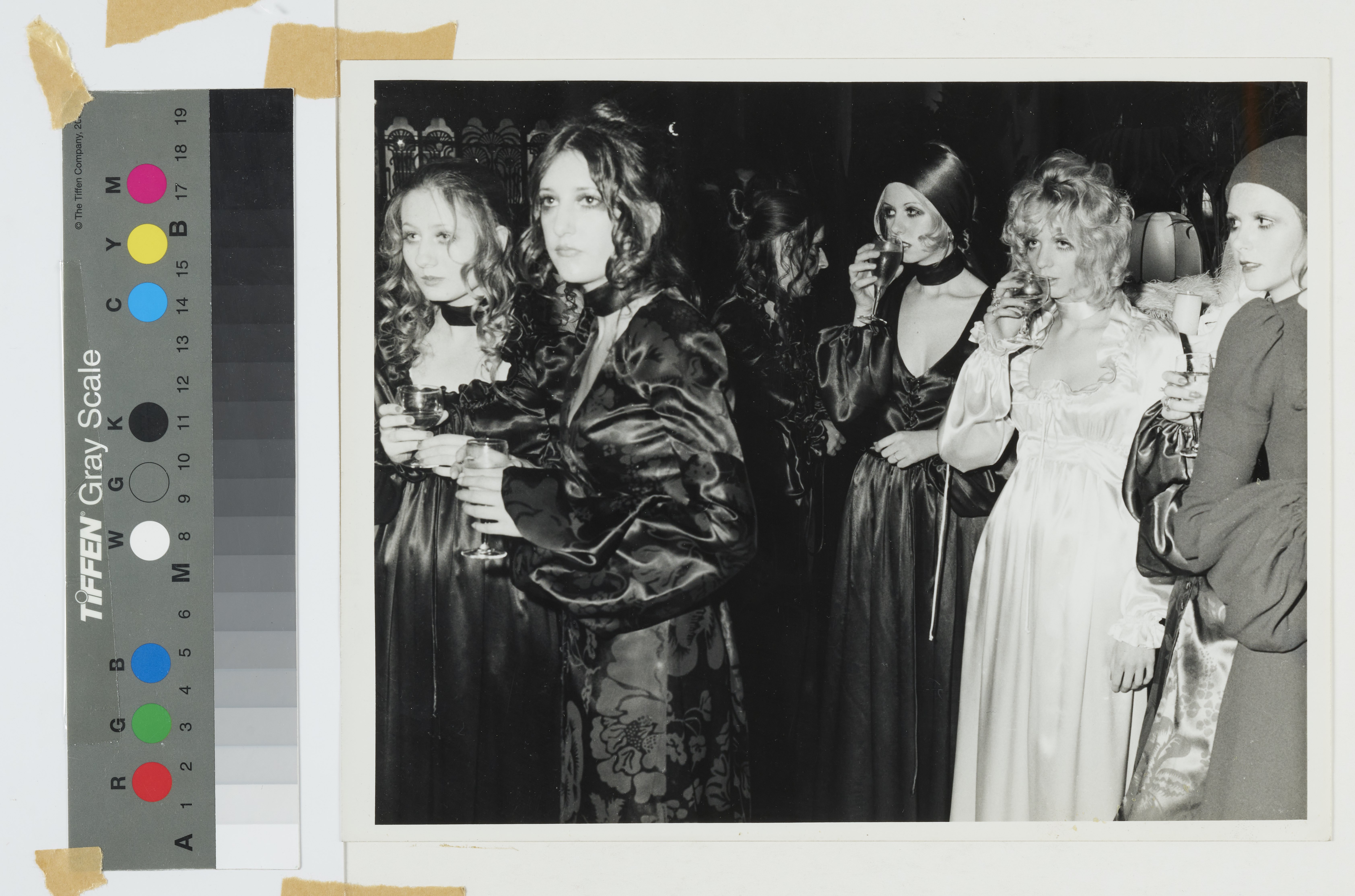
The Biba make-up launch party, with models (including Twiggy) wearing the Dudu Look
‘From the earliest days of Biba, Barbara wanted to introduce a range of cosmetics so customers could create the complete Biba look,’ says Martin Pel, curator of a new Biba retrospective opening this month (22 March 2024) at London’s Fashion & Textile Museum. ‘It was the first company to create a full range of cosmetics for both Black skin, and men. Within two years of its launch, Biba cosmetics were sold in over 30 countries across three continents.’
The keys to Biba’s success story lies in its ability to speak authentically to its target audience: both aesthetically and fiscally. Any advertising was created in-house and tapped into the zeitgeist, allowing organic growth through word of mouth. As such, prices for products were always kept affordable, without skimping on quality or efficacy. There was even a name coined for the Biba make-up look, the Dudu Look, worn by Twiggy and copied by all. The look referenced stage and screen make-up, the kind worn by Clara Bow in the 1920s: pencil-thin brows, dark lips, dark eyes, huge doll-like lashes. (One can’t help but imagine how many TikTok tutorials for the trend there would be, had the app been around at the time).
Receive our daily digest of inspiration, escapism and design stories from around the world direct to your inbox.
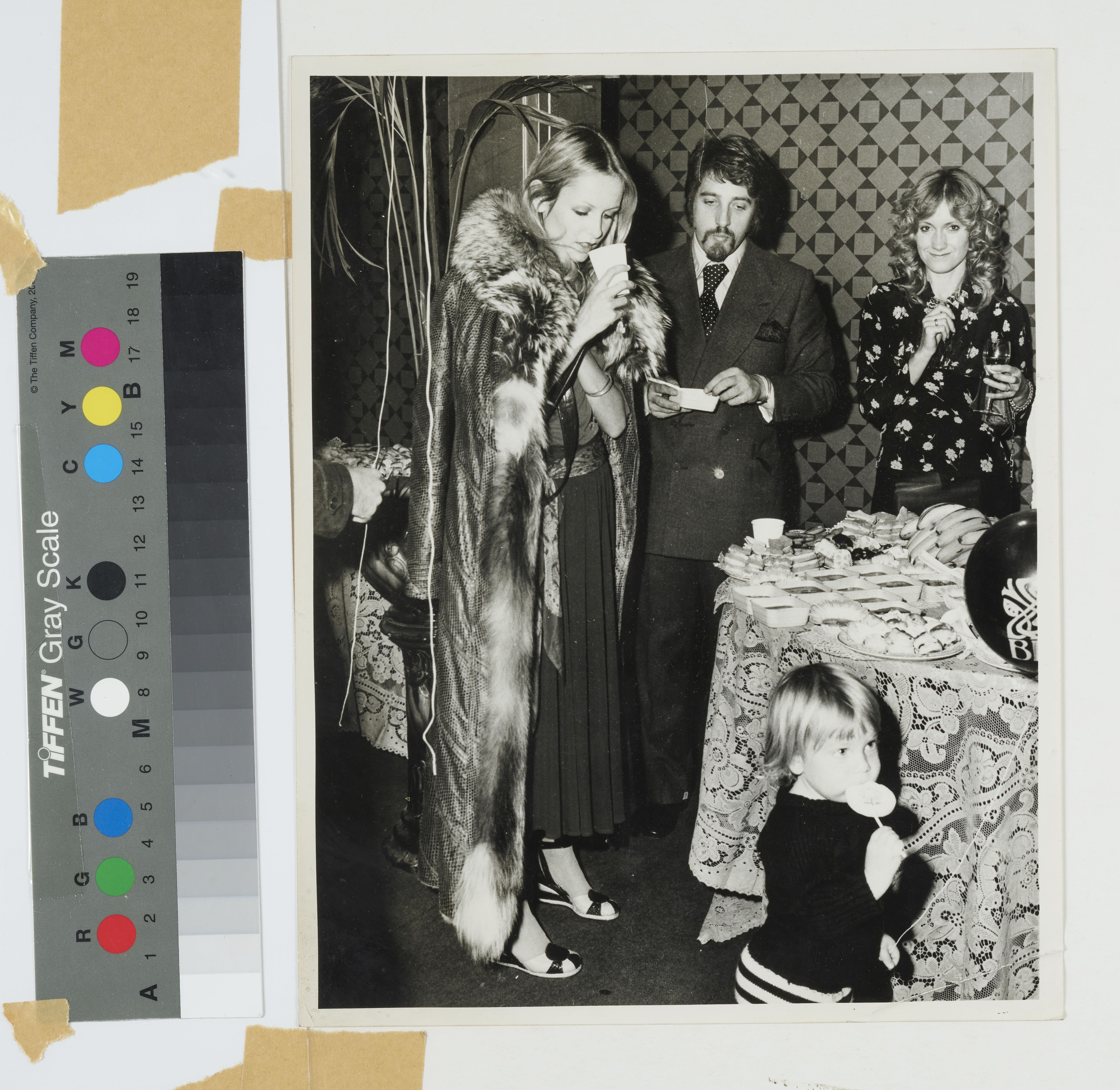
Twiggy attending the Biba make-up launch party
As Delisia Price says: ‘We weren’t like Mary Quant or Ossie Clark – I loved them, but it was impossible to be able to afford it.’ This meant that the young people it was marketed to could buy into a slice of the Biba world, even if it was through a pair of extravagant false lashes, or lipstick in an unusual shade of green that would cause intentional unease to their parents and the general public. Even launch party events – now commonplace in the world of beauty – were made part of Biba’s repertoire.
‘We had a big party to open the cosmetics line, and all the girls were dressed and made up in Biba make-up and clothes, head-to-toe,’ says Hulanicki, recalling the Kensington tea dance that introduced the make-up line to the world. ‘We all got into this taxi to head over to the venue, and I wish I’d taken a picture of the driver’s face. He looked horrified! He didn’t know what to do with himself.’

The invitation to the Biba make-up launch party
‘It’s fascinating to watch how the make-up and cosmetics industry is today,’ concludes Hulanicki. ‘I go into the big Sephora in Miami, as I’m friendly with some of the people who work there, and all the young ones are looking at the make-up and skincare. There are now queues of thousands of people when make-up lines launch in department stores.’ But undoubtedly, Biba did it first.
‘The Biba Story: 1964-1975’ is open at the London Fashion & Textile Museum, 22 March – 8 September 2024.
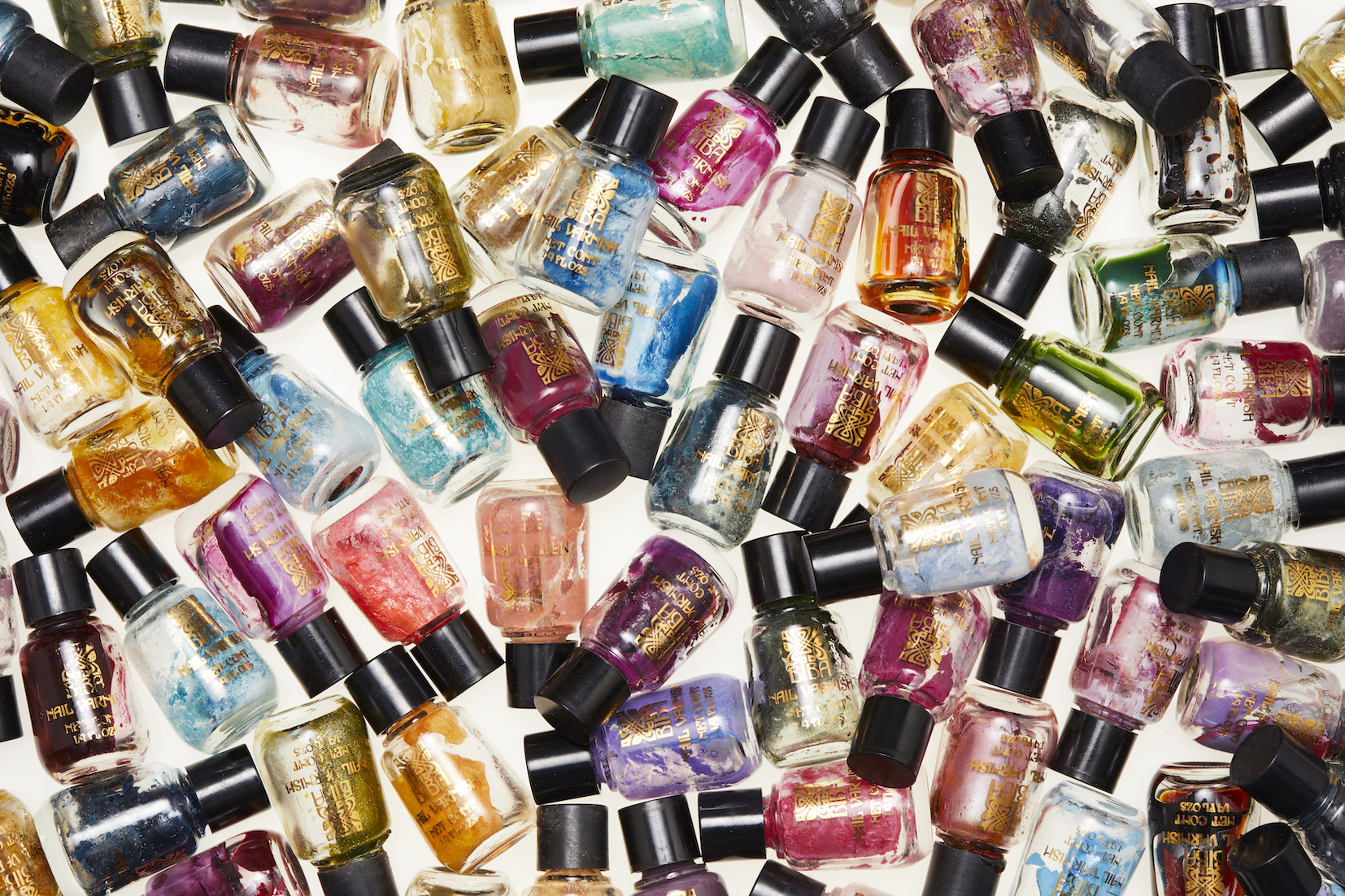
Biba nail polishes
Hannah Tindle is Beauty & Grooming Editor at Wallpaper*. She brings ideas to the magazine’s beauty vertical, which closely intersects with fashion, art, design, and technology.
-
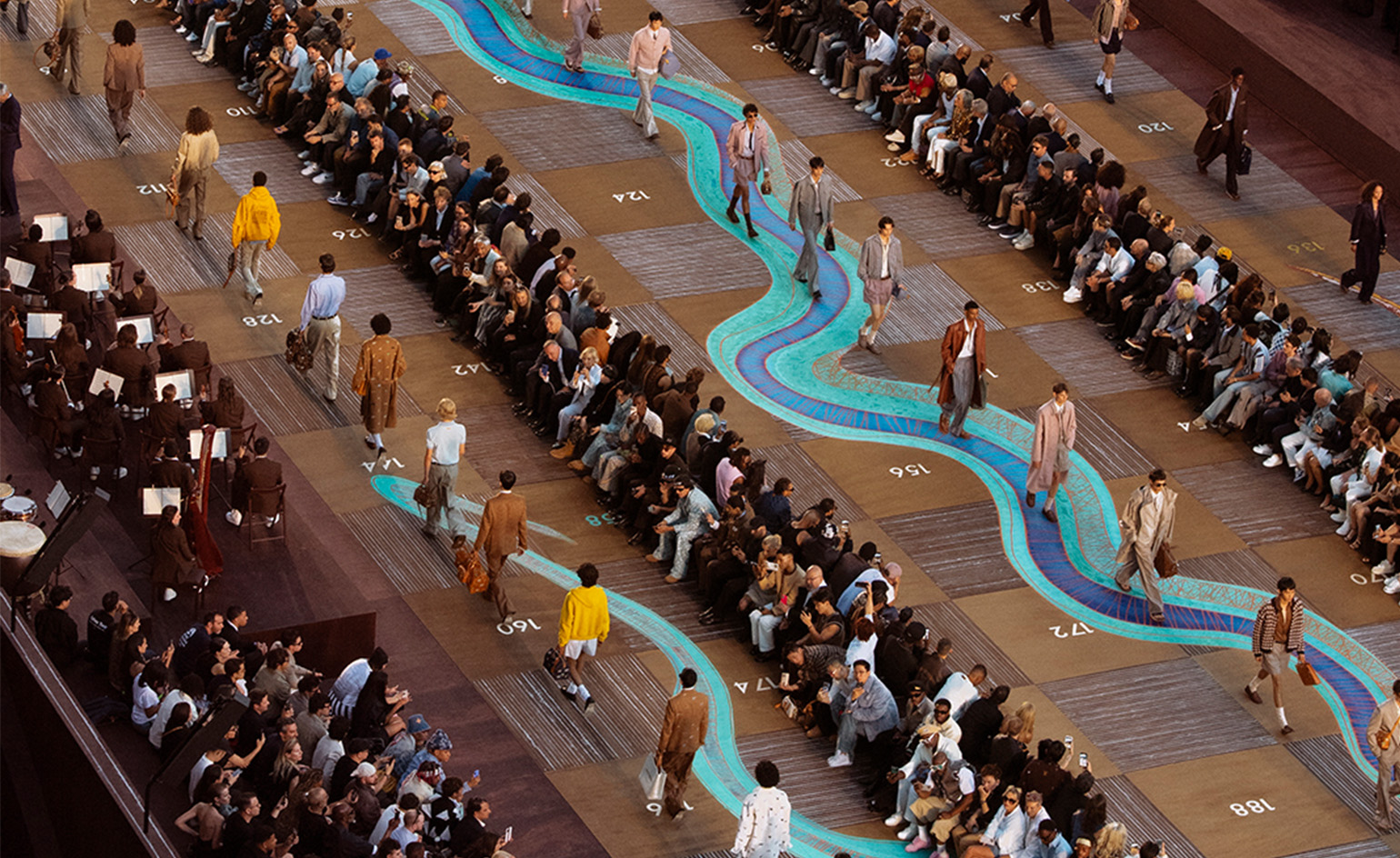 This documentary tells the story behind Louis Vuitton’s monumental Snakes and Ladders runway set
This documentary tells the story behind Louis Vuitton’s monumental Snakes and Ladders runway setThe new film offers a rare behind-the-scenes glimpse at how Pharrell Williams and Studio Mumbai conceived the 2,700 sq ft Snakes and Ladders board, which backdropped the house’s S/S 2026 menswear collection last June
-
 This remarkable retreat at the foot of the Catskill Mountains was inspired by the silhouettes of oak leaves
This remarkable retreat at the foot of the Catskill Mountains was inspired by the silhouettes of oak leavesA New York City couple turned to Desai Chia Architecture to design them a thoughtful weekend home. What they didn't know is that they'd be starting a farm, too
-
 Is this the world’s most striking food stall?
Is this the world’s most striking food stall?There’s more than meets the eye at this handsome food stall concept by Lyth Design, located in the northern Indian city of Sonipat
-
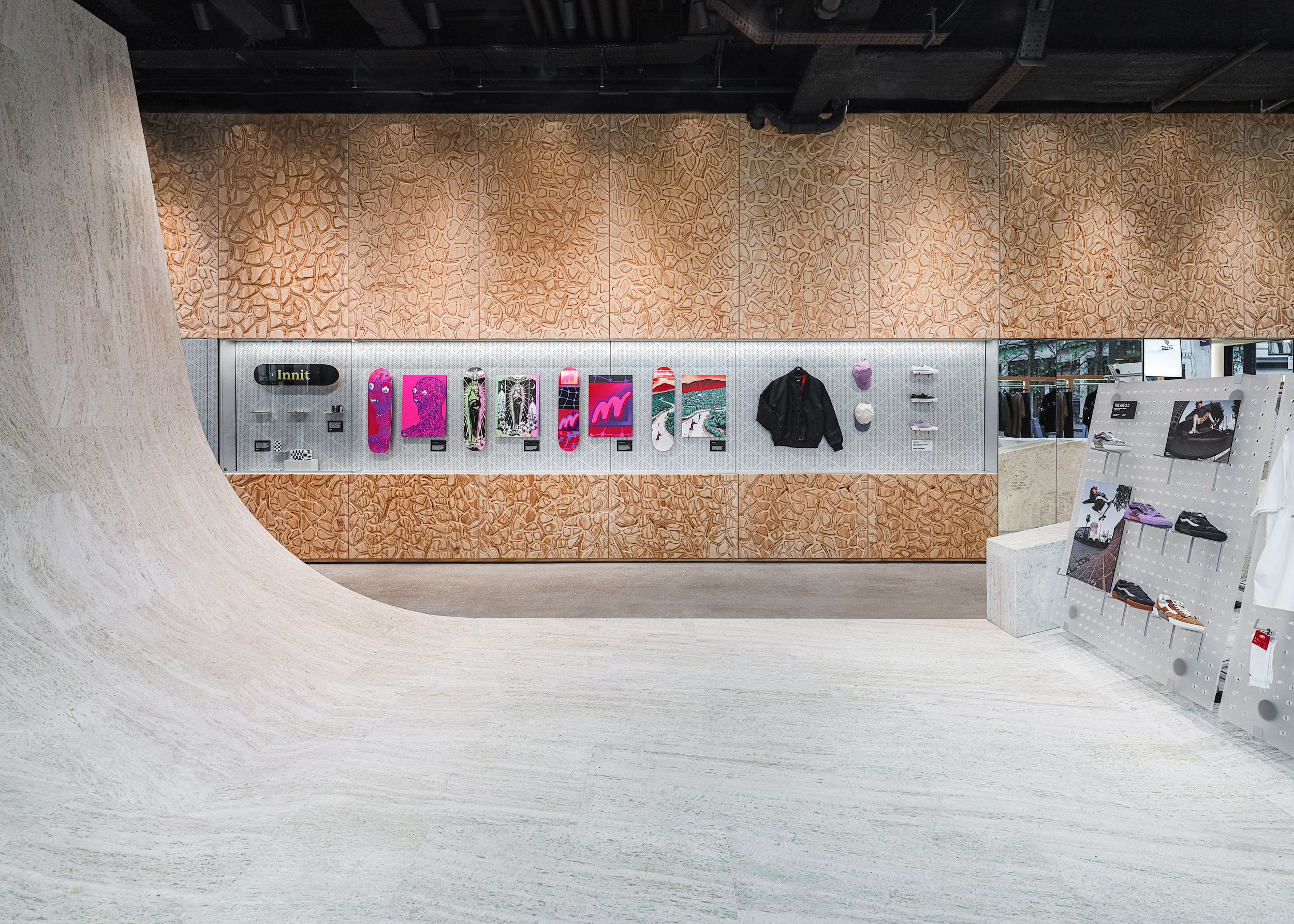 Vans’ West End store turns skatepark, with a 200 sq m travertine ramp
Vans’ West End store turns skatepark, with a 200 sq m travertine rampPart store, part community hub, Vans West End in London ramps up its skateboarding credentials with a design by Andrea Caputo Studio
-
 20 years of Dover Street Market’s transporting in-store installations, from giant elephants to soft toys
20 years of Dover Street Market’s transporting in-store installations, from giant elephants to soft toysAs Dover Street Market, Rei Kawakubo and Adrian Joffe’s radical London concept store, celebrates its 20th anniversary, we look back at ten of its most colourful installations, crafted alongside Simone Rocha, Jonathan Anderson, Martin Parr and more
-
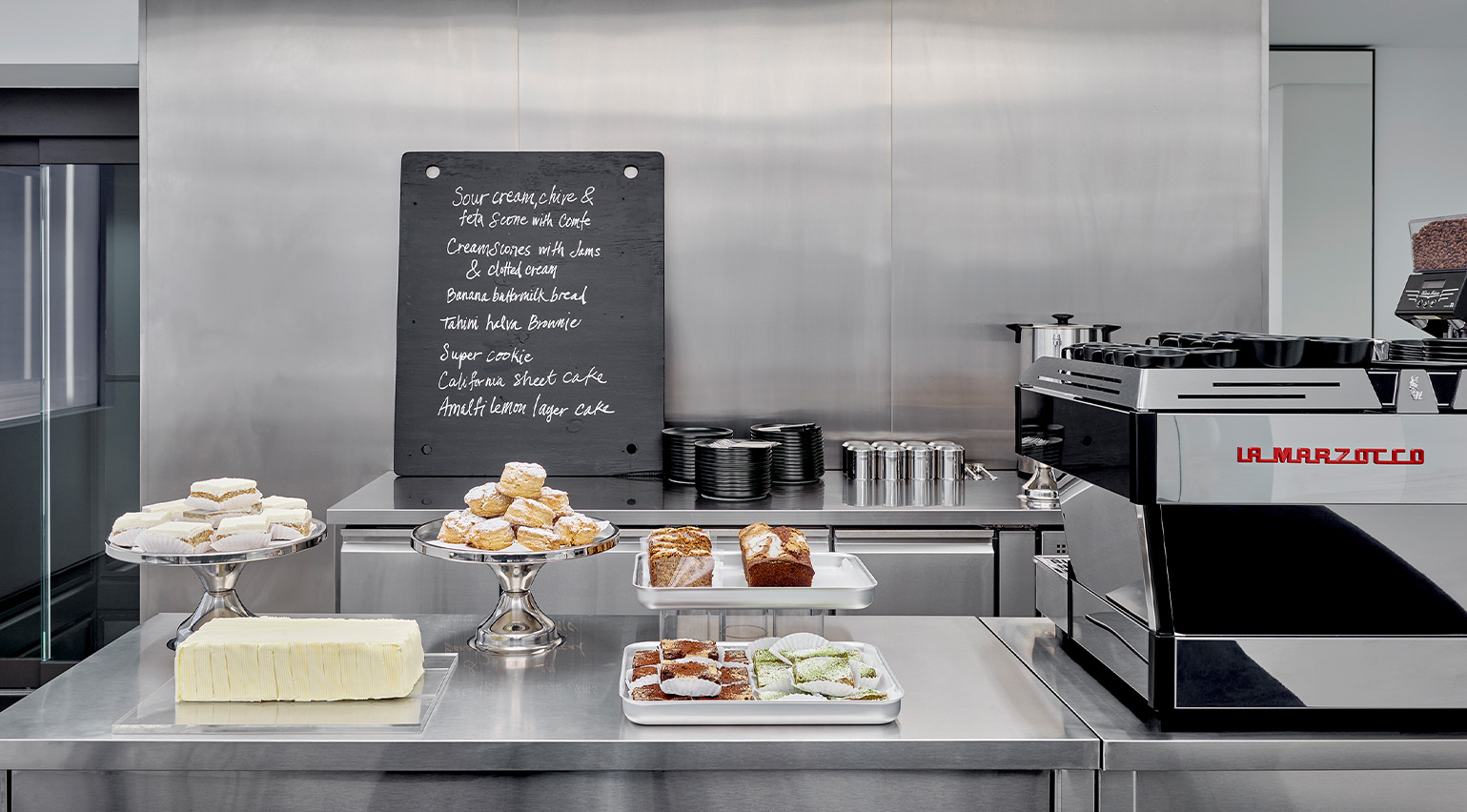 Alaïa’s secret new London café and bookstore is inspired by the art of hosting
Alaïa’s secret new London café and bookstore is inspired by the art of hostingHoused on the third floor of Alaïa’s London flagship, the intimate space – inspired by Azzedine Alaïa’s famed hospitality – includes a Violet Cakes bakery and a bookstore by Claire de Rouen
-
 ‘Music is in the DNA of the brand’: AV Vattev on creating this year’s loudest accessory
‘Music is in the DNA of the brand’: AV Vattev on creating this year’s loudest accessoryRising London designer AV Vattev – who has recently outfitted Charli XCX and Troye Sivan for their viral ‘Sweat’ tour – talks about the influence of music on his ‘bold and unapologetic’ collections
-
 APOC’s secret London pop-up is a curiosity shop of weird and wonderful fashion
APOC’s secret London pop-up is a curiosity shop of weird and wonderful fashionOffbeat fashion emporium APOC’s London pop-up opens in time for the holiday season, offering the work of more than 70 avant-garde designers – most of which you won’t find elsewhere – in a secret location
-
 How Chanel’s Cometes Collective brings make-up to life with a fearless use of unconventional colour
How Chanel’s Cometes Collective brings make-up to life with a fearless use of unconventional colourChanel’s Cometes Collective is Ammy Drammeh, Cécile Paravina and Valentina Li. Here, the trio of make-up artists speak with Wallpaper’s beauty editor Hannah Tindle, revealing the creative processes behind their work for the house
-
 ‘If someone says no, you’re talking to the wrong person’: how make-up artist Marcelo Gutierrez created his own universe in New York
‘If someone says no, you’re talking to the wrong person’: how make-up artist Marcelo Gutierrez created his own universe in New YorkFresh from publishing his first book ‘Nothing Precious’, Marcelo Gutierrez speaks with Mary Cleary about his friends, collaborators and making it as a young creative in New York City
-
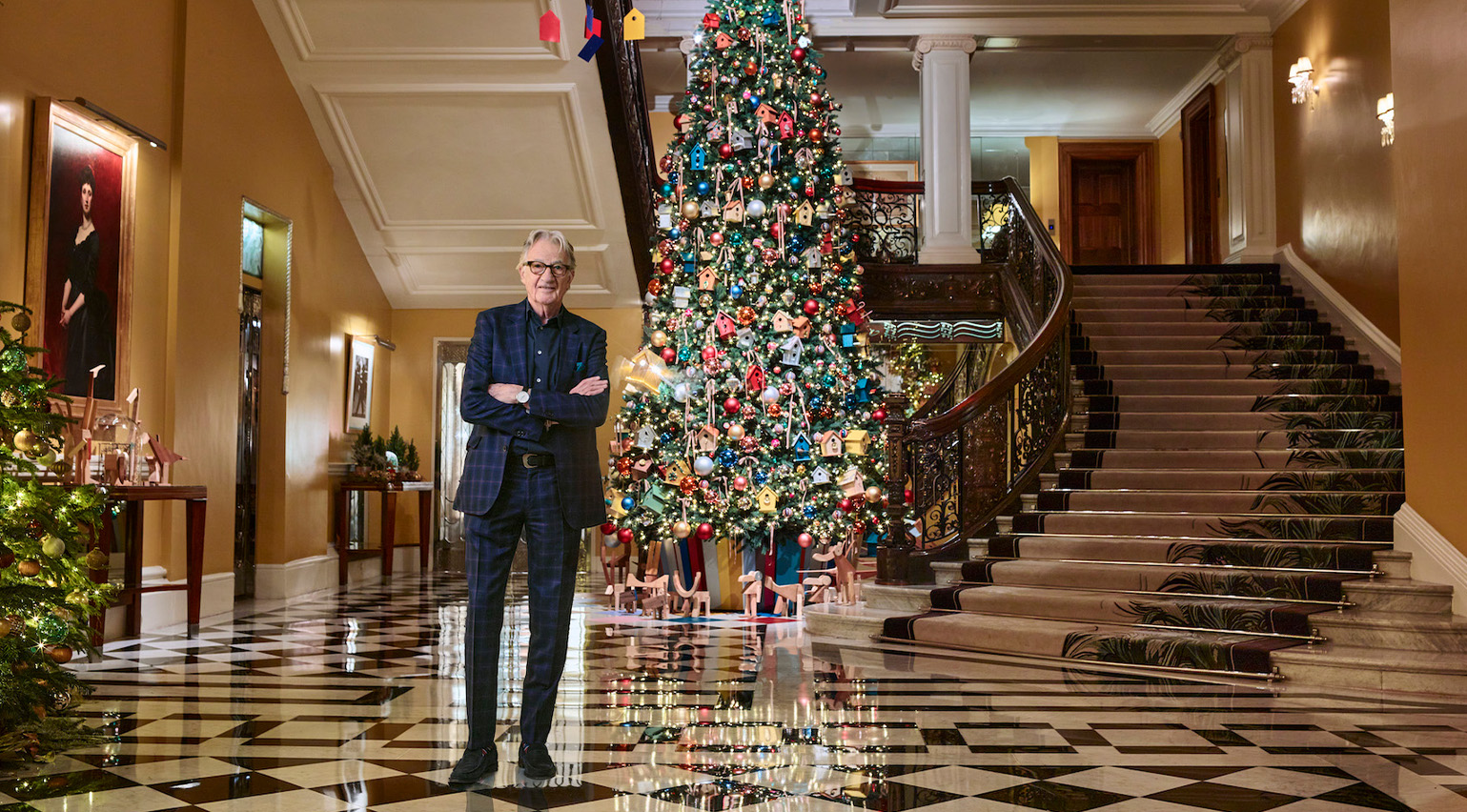 Paul Smith’s Claridge’s Christmas tree is a playful slice of ‘countryside in the centre of London’
Paul Smith’s Claridge’s Christmas tree is a playful slice of ‘countryside in the centre of London’Sir Paul Smith is the latest in a long line of fashion designers to curate the iconic Claridge’s Christmas tree. Here, he talks to Wallpaper* about the inspiration behind the tree, which features bird boxes and wooden animals